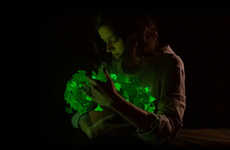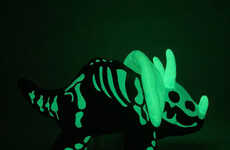Transgenic Dog Helps Researchers Understand Disease
References: newscientist
Ruppy or Ruby Puppy is the world’s first fluorescent glow-in-the-dark puppy. She and four other beagles were grown from cloned embryos which had the red fluorescent gene from sea anemones artificially inserted. This is a proof of concept experiment to produce transgenic dogs which could help researchers understand diseases. The work was done by scientists at Korea’s Seoul University and the University of Kentucky.
Some scientists question, however, whether transgenic dogs will become more widespread because creating and maintaining them is “labourious, expensive and slow.” The current procedure has a low cloning efficiency—only 1.7% of the embryos came to term.
Some scientists question, however, whether transgenic dogs will become more widespread because creating and maintaining them is “labourious, expensive and slow.” The current procedure has a low cloning efficiency—only 1.7% of the embryos came to term.
Trend Themes
1. Transgenic Animals - Creating transgenic animals through genetic modifications for scientific research purposes can lead to new discoveries and medical breakthroughs.
2. Fluorescent Animals - Developing fluorescent animals using gene-editing techniques may revolutionize scientific research and diagnostics.
3. Cloning Efficiency - Improving cloning efficiency and reducing costs can make genetic modifications more accessible and practical for scientific advancements.
Industry Implications
1. Biotech - Biotech companies that focus on creating genetically modified animals for research purposes can benefit from advancements in transgenic and cloning technologies.
2. Medical Research - Medical research institutions can leverage transgenic animals to study diseases and develop new treatments or therapies.
3. Diagnostic Imaging - Companies that produce diagnostic imaging equipment can expand their offerings with the development of fluorescent animals for preclinical studies.
3.3
Score
Popularity
Activity
Freshness






















